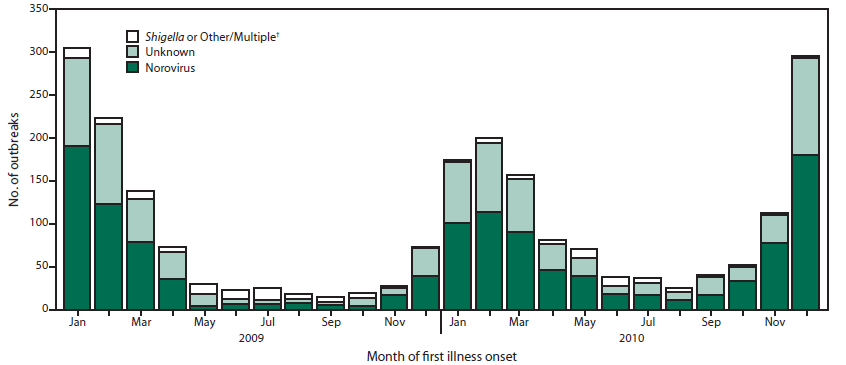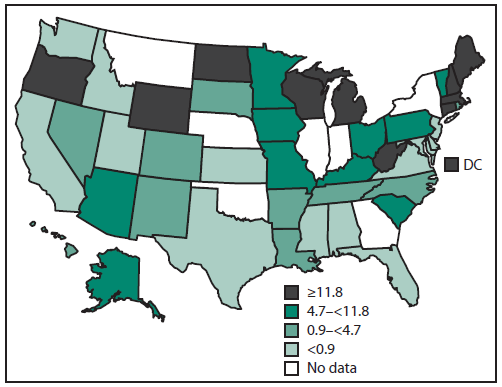FIGURE 2. Number* of outbreaks of acute gastroenteritis transmitted by person-to-person contact, by month of first illness onset and etiology — National Outbreak Reporting System, United States, 2009–2010

* n = 2,259
† Includes Salmonella spp., rotavirus, Shiga toxin-producing E. coli (STEC), Giardia lamblia, Cryptosporidium spp., Clostridium difficile, sapovirus, Campylobacter jejuni, and outbreaks with multiple etiologies.
Alternate Text: The figure is a bar chart that presents the number of outbreaks of acute gastroenteritis transmitted by person-to-person contact during 2009-2010 by the month of first illness and etiology.
 ShareCompartir
ShareCompartir



